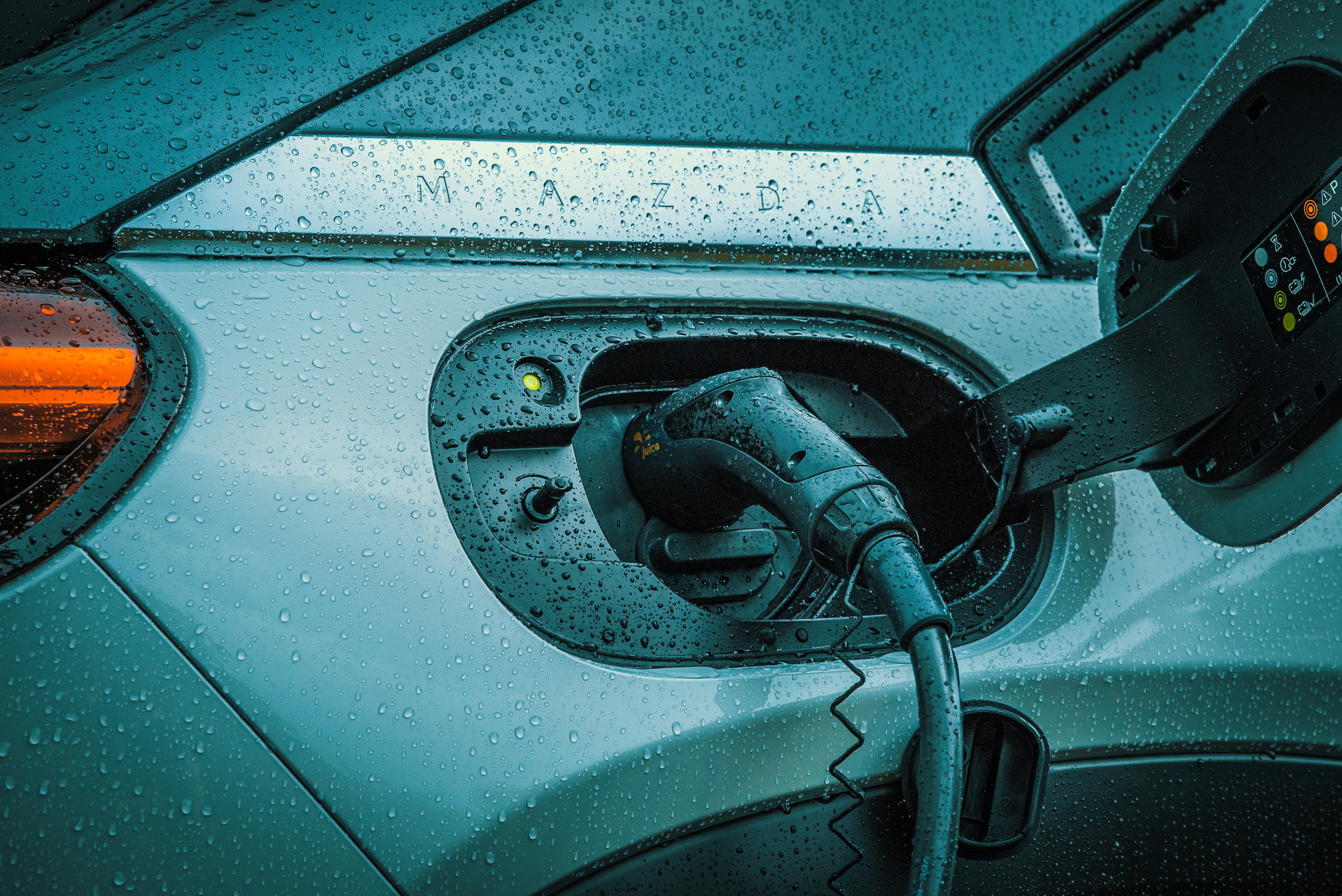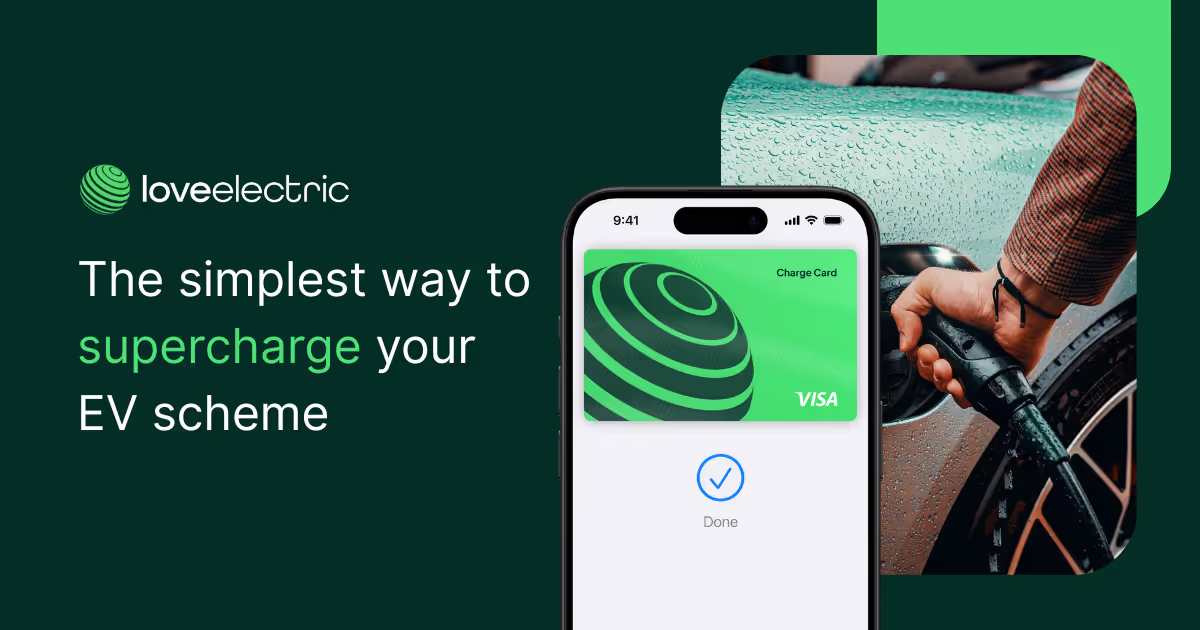EV Charging Employee Reimbursement Guide: Bridge the Gap Between HMRC Rates and Real Costs

Key Insights
- HMRC's new 14p/mile public charging rate still falls short – Rapid charging costs 15-23p/mile, leaving employees to subsidise business travel by hundreds of pounds annually.
- The reimbursement gap actively undermines corporate sustainability targets – Inadequate charging allowances discourage EV adoption and slow fleet electrification progress.
- Receipt-based expense systems create significant administrative burden – HR teams face complex validation processes and potential tax complications when reimbursing actual charging costs.
- A charge card solution offers HMRC-compliant alternative – Salary sacrifice structures eliminate underpayment risks while ensuring tax efficiency and seamless integration with existing EV programmes.

If you are struggling with electric vehicle (EV) expenses, you're not alone. As more companies embrace electric company cars and employees adopt EVs through salary sacrifice schemes, a significant gap has been emerging between what HMRC rates cover and what employees actually pay for charging on the road.
From 1 September 2025, HMRC has split the Advisory Electricity Rate (AER) into two bands: 8 pence per mile for home charging and 14 pence per mile for public charging (HMRC). It’s a welcome step forward, but the new rates will still sometimes fall short of real-world charging costs.
HMRC's Split Rate Response: A Step Forward, But Not Far Enough
The New Advisory Electricity Rates
From 1 September 2025, HMRC will split the Advisory Electricity Rate (AER), reimbursing company car drivers at 8 pence per mile for home charging and 14 pence per mile for public charging. On the surface this looks like a big step forward. The new public charging rate is a 100% increase on the old flat 7p rate and does better reflect the higher cost of charging away from home.
However, the numbers still fall short of the real-world costs:
- Slow/Fast Public Charging: Averages 52p per kWh
- Rapid/Ultra-Rapid Charging: Averages 76p per kWh, with some networks charging as much as 90p per kWh
For an average efficiency EV, around 3.5 to 4 miles per kWh, that means 15p per mile on slow or fast charging and 23p per mile on rapid charging. In practice, employees are still paying more than HMRC’s allowance covers out of pocket.
Steve Tigar, loveelectric CEO’s Take
The Impact of HMRC’s Update on Employers
HMRC’s decision to split the Advisory Electricity Rate is a step in the right direction, but it still misses the mark in some important areas. Most notably, it does not account for the high cost of rapid charging. For employees who need to rely on rapid chargers during business trips, the 14p per mile allowance falls far short of the true cost. This could unintentionally push employees to detour to slower, cheaper charge points to avoid being out of pocket, which results in more time spent charging on company time. That is a direct hit to productivity and creates an unnecessary cost for employers who are already managing tight margins.
At the other end of the spectrum, employees who can charge at home may be paying as little as 2p per mile, yet employers relying on the AER will be reimbursing them at 8p per mile. That is four times the actual cost, adding unnecessary expense at a time when businesses are under intense pressure to control their cost base.
This mismatch shows why a one-size-fits-all advisory rate cannot deliver fairness or efficiency. The loveelectric Charge Card provides a more elegant solution by tracking the actual cost of every charging session and ensuring employees are reimbursed to the penny. It works for both sides: employees are never left out of pocket for business travel, and employers never pay more than they should.
“With the Charge Card, employees are reimbursed to the penny. It is fair for them and efficient for employers.”
Steve Tigar, CEO of loveelectric
Why This Matters
Impact on Employee Satisfaction and Retention
When employees are effectively subsidising business travel to the tune of hundreds of pounds each year, the consequences extend well beyond frustration with expenses. For staff in field-based roles, this additional financial pressure can create genuine stress and resentment. Many employees feel penalised for choosing the more sustainable option, which undermines the narrative of EVs as a positive, future-facing benefit.
The real challenge lies in the reimbursement model, not in the vehicles themselves. Without a fair and consistent way to cover charging costs, even the best-intentioned policies can leave employees feeling undervalued. By contrast, organisations that remove this barrier strengthen trust, demonstrate alignment between sustainability goals and employee experience, and gain a clear advantage in attracting and retaining talent. Ensuring employees feel fully supported in their switch to EVs turns electrification into a genuine benefit rather than a potential point of friction.
Barriers to Your Sustainability Goals
If your organisation has committed to net-zero targets or fleet electrification, the shortfall in charging reimbursements can become a real barrier. When employees are left to absorb part of the cost of public charging, EVs quickly lose their appeal and many will opt for petrol or diesel alternatives instead. That not only slows EV adoption but also undermines progress against your Scope 3 emissions reduction targets, where business travel is often one of the largest contributors.
For large enterprises, even a modest slowdown in EV uptake across a fleet can translate into thousands of additional tonnes of CO₂ each year. It also risks creating a disconnect between stated sustainability commitments and the lived experience of employees, which can damage credibility with investors, regulators and customers. Bridging the cost gap is therefore not just a matter of employee fairness but a critical lever for achieving genuine emissions reductions across your value chain.
.jpg)
What Are Companies Doing?
The Conservative Approach: Stick to HMRC Rates
Many employers default to this position, applying the standard AER regardless of actual charging costs. It's the path of least resistance as existing expense systems handle it automatically, there are no additional budget implications, and it maintains complete tax efficiency. However, this approach essentially shifts the financial burden of inadequate government rates onto employees.
Pros: Simple administration, tax-efficient, no additional costs
Cons: Leaves employees financially disadvantaged, damages morale, slows EV adoption
The Receipt-Based Approach: Reimburse Actual Costs
Some forward-thinking employers choose to reimburse employees for actual charging receipts, recognising the unfairness of the HMRC rate gap. While this ensures employees aren't out of pocket, it creates significant administrative complexity. HR teams must verify receipts, distinguish between business and personal charging, and navigate potential tax implications if the reimbursement exceeds HMRC rates. At scale, this becomes unmanageable and may create taxable benefits that require P11D reporting.
Pros: Fair to employees, covers real expenses
Cons: Administrative burden, potential tax implications (benefit in kind), difficult to manage at scale
The Best Approach: An EV Charge Card
Rather than accepting the current approaches that either leave employees out of pocket or create administrative headaches, there's a smarter way forward. The loveelectric Charge Card transforms this challenge into a competitive employee benefit.
We've already established that public charging costs can reach over 80p/kWh, more than ten times domestic rates. The loveelectric Charge Card tackles this head-on, in some cases cutting those costs in half and delivering thousands in savings over a typical lease period.
The beauty lies in its simplicity. Employees sacrifice the appropriate amount based on their personal mileage and charging patterns. In return, they receive a virtual Visa card that works seamlessly with Apple Pay or Google Pay at any UK charging point, as well as with home energy suppliers for those charging at home. This means they save between 30–60% on their personal mileage.
At the same time, because the Charge Card tracks the actual cost of every charging session and provides the appropriate data to employers, business mileage can be reimbursed accurately and fairly. The result is that employees are never left out of pocket for business trips while also enjoying heavily discounted charging for every personal journey.

Why the Charge Card Works Where Other Solutions Don't
Other approaches to covering EV charging costs create unnecessary challenges. The Charge Card avoids these pitfalls by offering a simple, fair and compliant alternative:
- Fully compliant with HMRC guidance: structured as a pre-set salary sacrifice arrangement rather than retrospective expense claims.
- No administrative burden: unlike receipt-based reimbursement systems.
- No financial disadvantage for employees: unlike sticking rigidly to HMRC rates.
- Immediate savings: the salary sacrifice structure delivers tax and National Insurance benefits straight away.
- Affordable public charging: Charge Card savings make on-the-road charging far less costly.
How is the Charge Card Compliant?
The Charge Card is structured as a pre-set salary sacrifice arrangement rather than a retrospective expense claim, which means it meets HMRC requirements. Deductions are agreed upfront and applied consistently through payroll, and the card is restricted to public chargers and home energy suppliers to prevent misuse.
By comparison, some alternatives take a looser approach, which can risk creating taxable benefits or attracting HMRC scrutiny. The Charge Card avoids these risks and gives HR and finance teams complete confidence.
Do I need to switch EV salary sacrifice providers?
No. The Charge Card is designed to slot into existing arrangements. It integrates with any EV salary sacrifice scheme or company car programme, whether your employees drive electric vehicles from loveelectric, another provider, through a company car allowance. That means you can offer the benefit without changing your current provider or processes.
Watch our 3-minute explainer video to see the real-world impact on employee charging costs.
Looking Ahead: Industry Trends and Future Considerations
Charging Infrastructure Development
The UK government continues to invest heavily in rapid charging infrastructure, with plans for widespread expansion over the next decade. This will make it easier for employees to find a charger, but it will not necessarily make charging cheaper. Public charging is likely to remain far more expensive than domestic rates because of higher operating costs, ongoing infrastructure investment, and grid demand charges. This means that even with HMRC’s new split rates, a shortfall will continue between the 14p per mile allowance and the real-world cost of public charging.
HMRC Rate Evolution
From September 2025, HMRC has introduced split rates of 8p per mile for home charging and 14p per mile for public charging, replacing the previous flat rate of 7p. While this is a welcome acknowledgment that charging costs vary, it still does not cover the true cost of public charging, which typically ranges from 15p to 23p per mile depending on charger speed. Industry groups will continue to press for further adjustments, but based on HMRC’s historic pace of change, increases are likely to remain gradual and behind the curve of real-world costs.
Take Action Today
The EV charging reimbursement challenge is not going away, but it is completely solvable. Companies that take action now to close the gap between HMRC rates and real charging costs will be better placed to support their employees both financially and practically. By removing the risk of out-of-pocket expenses, they make EV adoption easier and faster, directly contributing to sustainability goals. At the same time, a fair and forward-thinking approach to charging costs strengthens your company’s position in the talent market, helping to attract new employees and retain existing ones. Perhaps most importantly, it sends a clear signal of leadership in corporate responsibility, showing that the business is committed to doing the right thing for both its people and the planet.
Do not let charging costs derail your sustainability agenda or undermine employee satisfaction. The loveelectric Charge Card offers a simple, cost-effective solution that integrates seamlessly with your existing EV programme.
Ready to close the charging cost gap for your employees? Get in touch to explore how the Charge Card could work for your organisation.





